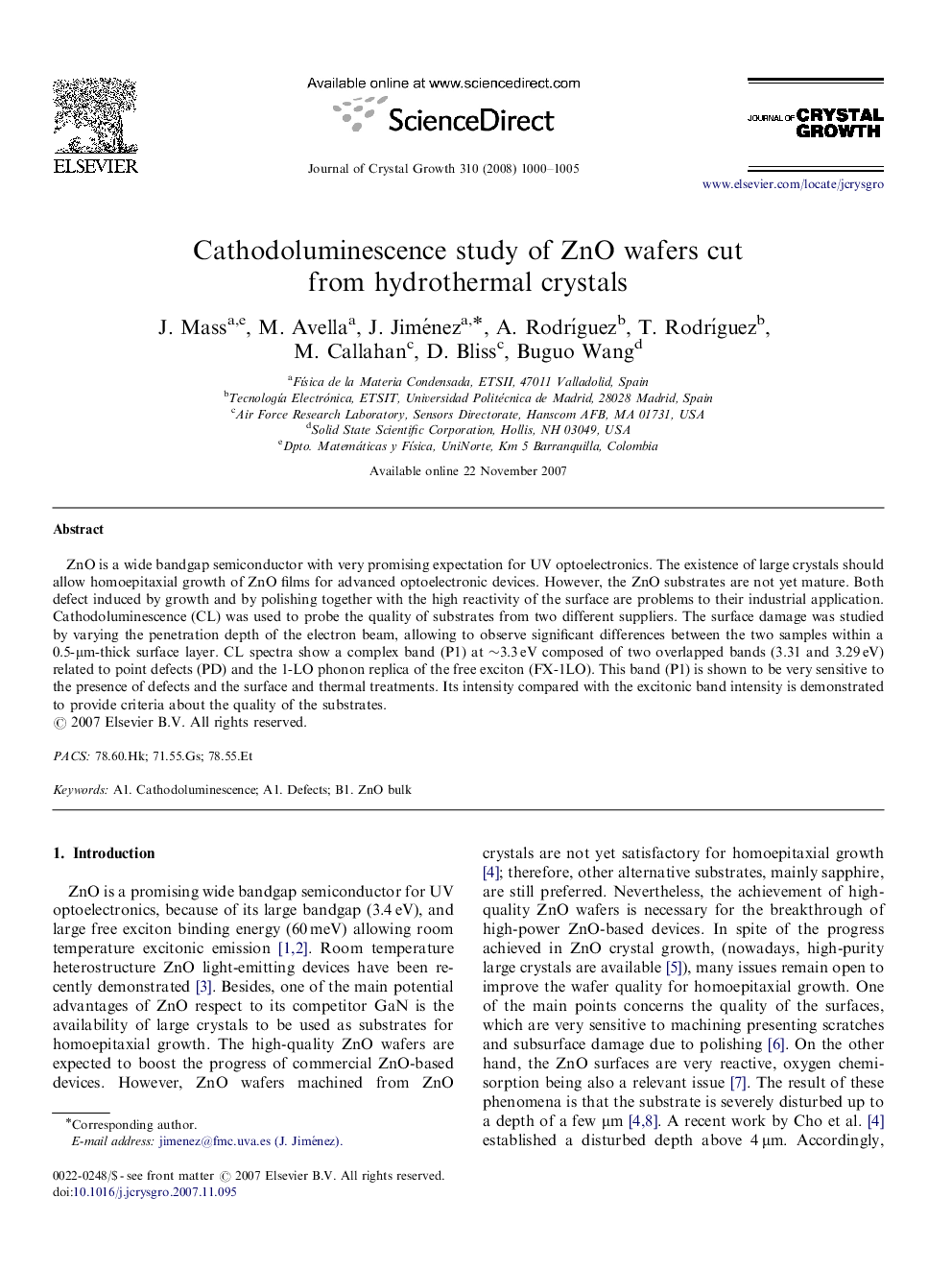| Article ID | Journal | Published Year | Pages | File Type |
|---|---|---|---|---|
| 1794451 | Journal of Crystal Growth | 2008 | 6 Pages |
Abstract
ZnO is a wide bandgap semiconductor with very promising expectation for UV optoelectronics. The existence of large crystals should allow homoepitaxial growth of ZnO films for advanced optoelectronic devices. However, the ZnO substrates are not yet mature. Both defect induced by growth and by polishing together with the high reactivity of the surface are problems to their industrial application. Cathodoluminescence (CL) was used to probe the quality of substrates from two different suppliers. The surface damage was studied by varying the penetration depth of the electron beam, allowing to observe significant differences between the two samples within a 0.5-μm-thick surface layer. CL spectra show a complex band (P1) at â¼3.3 eV composed of two overlapped bands (3.31 and 3.29 eV) related to point defects (PD) and the 1-LO phonon replica of the free exciton (FX-1LO). This band (P1) is shown to be very sensitive to the presence of defects and the surface and thermal treatments. Its intensity compared with the excitonic band intensity is demonstrated to provide criteria about the quality of the substrates.
Related Topics
Physical Sciences and Engineering
Physics and Astronomy
Condensed Matter Physics
Authors
J. Mass, M. Avella, J. Jiménez, A. RodrÃguez, T. RodrÃguez, M. Callahan, D. Bliss, Buguo Wang,
